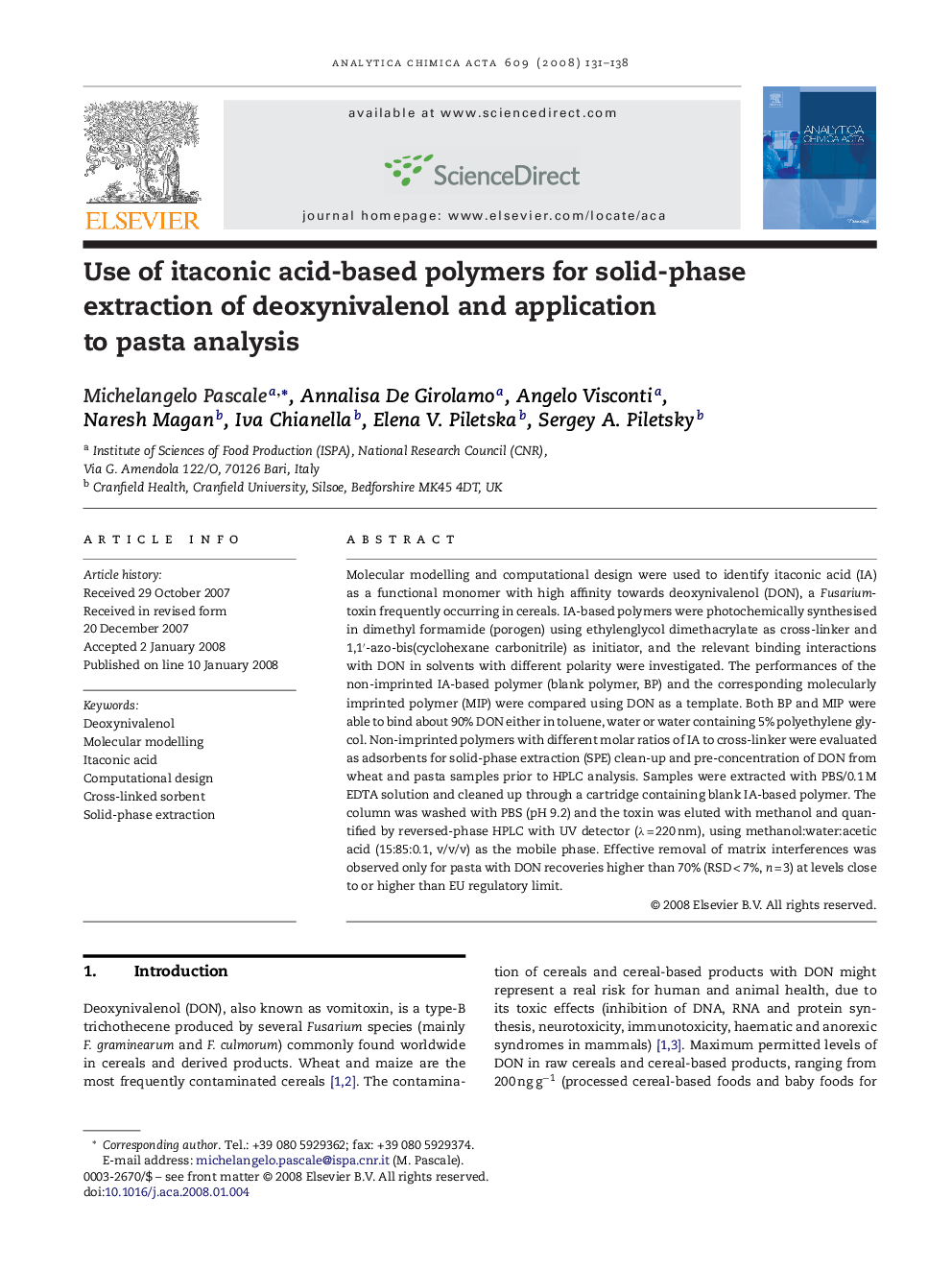| Article ID | Journal | Published Year | Pages | File Type |
|---|---|---|---|---|
| 1169368 | Analytica Chimica Acta | 2008 | 8 Pages |
Molecular modelling and computational design were used to identify itaconic acid (IA) as a functional monomer with high affinity towards deoxynivalenol (DON), a Fusarium-toxin frequently occurring in cereals. IA-based polymers were photochemically synthesised in dimethyl formamide (porogen) using ethylenglycol dimethacrylate as cross-linker and 1,1′-azo-bis(cyclohexane carbonitrile) as initiator, and the relevant binding interactions with DON in solvents with different polarity were investigated. The performances of the non-imprinted IA-based polymer (blank polymer, BP) and the corresponding molecularly imprinted polymer (MIP) were compared using DON as a template. Both BP and MIP were able to bind about 90% DON either in toluene, water or water containing 5% polyethylene glycol. Non-imprinted polymers with different molar ratios of IA to cross-linker were evaluated as adsorbents for solid-phase extraction (SPE) clean-up and pre-concentration of DON from wheat and pasta samples prior to HPLC analysis. Samples were extracted with PBS/0.1 M EDTA solution and cleaned up through a cartridge containing blank IA-based polymer. The column was washed with PBS (pH 9.2) and the toxin was eluted with methanol and quantified by reversed-phase HPLC with UV detector (λ = 220 nm), using methanol:water:acetic acid (15:85:0.1, v/v/v) as the mobile phase. Effective removal of matrix interferences was observed only for pasta with DON recoveries higher than 70% (RSD < 7%, n = 3) at levels close to or higher than EU regulatory limit.
